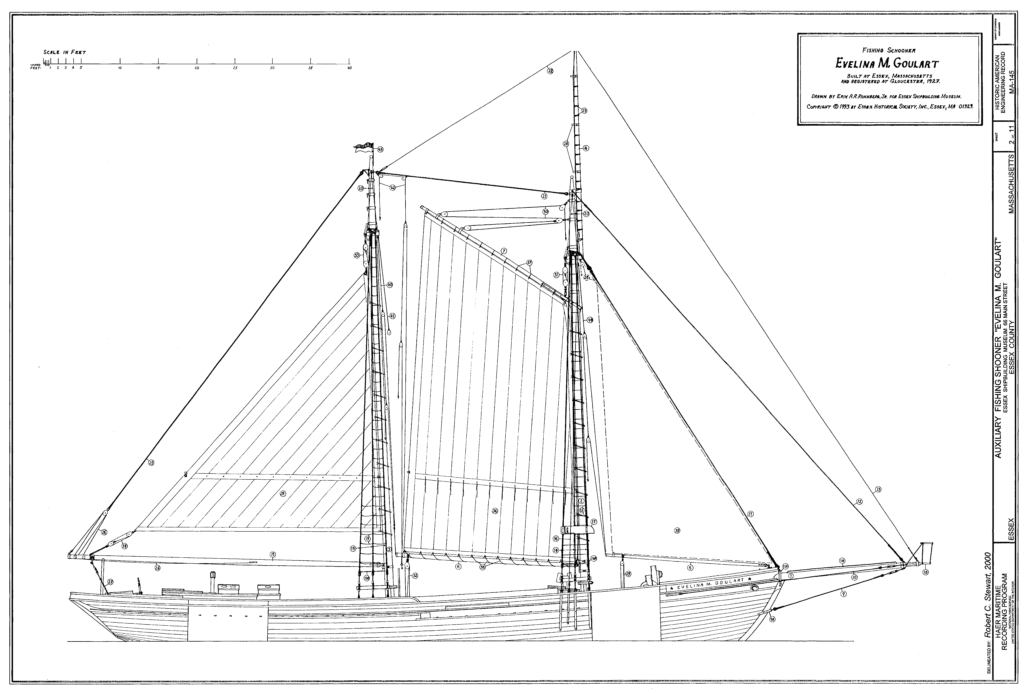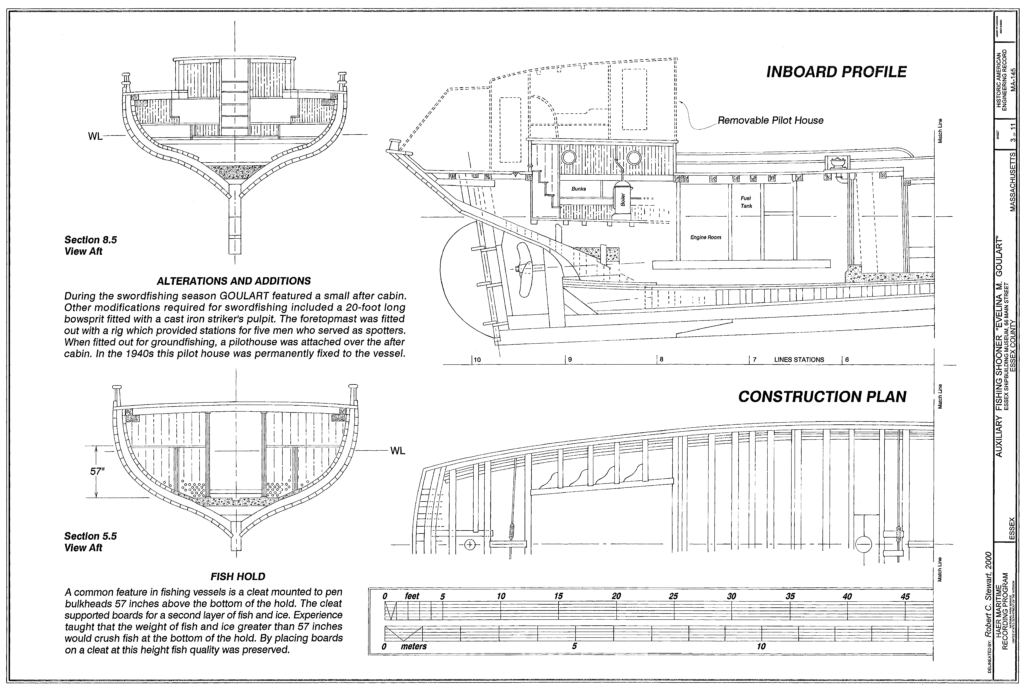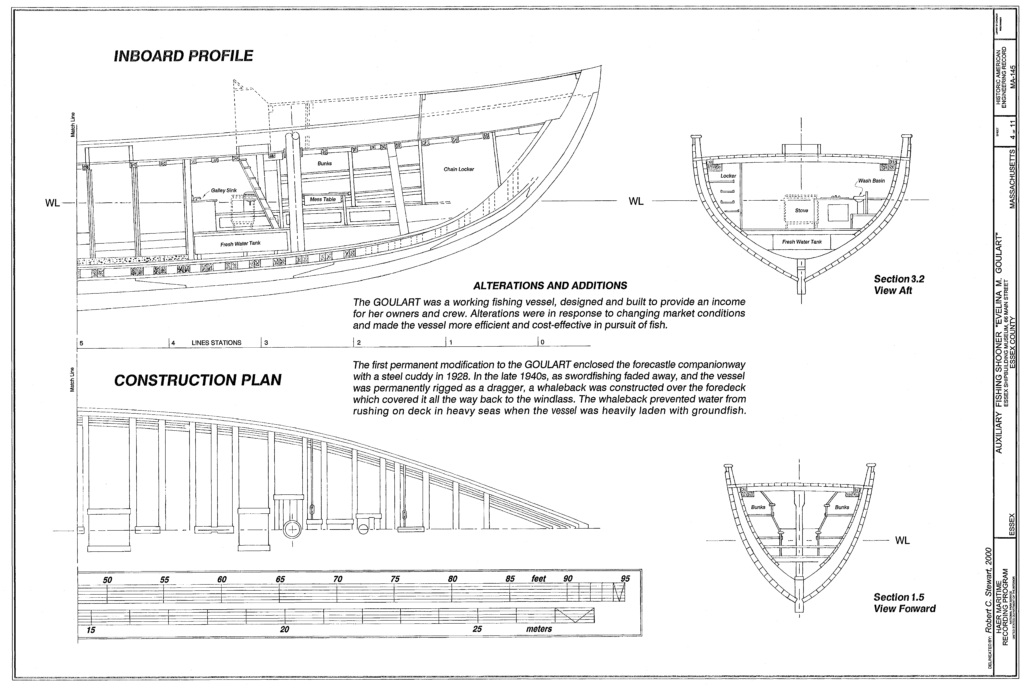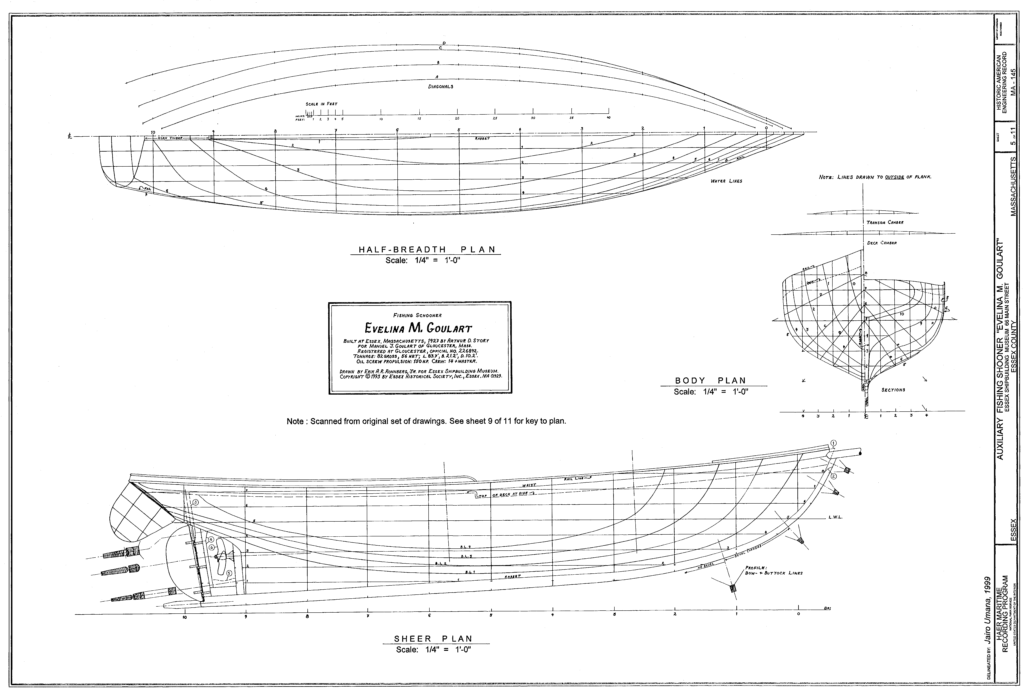Designed by Jacob Story IV, the Evelina M. Goulart was built at the A.D. Story shipyard in Essex, Massachusetts in 1927. Her main work was trawling for ground fish, but she also fished for swordfish. She was a “transitional schooner” that had a diesel engine in addition to sails.
“Goulart is a working vessel, and her design reflects the predominance of functional aspects over aesthetic design,” according to the Historic American Engineering Record report. [1]
Fitted out for swordfishing, the Goulart had a 20-foot long bowsprit fitted with a cast iron pulpit where the “striker” would stand to harpoon the fish. The foremast was fitted to hold five spotters to look for the fish. Goulart was originally fitted with a pilot house that could be removed for swordfishing. The pilot house was enlarged and made permanent in 1940.




[1] This project was recorded as part of the Historic American Engineering Record, which is administered by the National Park Service. The project was completed under the direction of Blaine Cliver, chief of HAER and the Essex Shipbuilding Museum. Field work, including measurements, video tapes, and drawings, was completed by Erik A.R. Ronnberg Jr., Roger Hambidge, Leon Poindexter, Nancy D’Estang, and Wayne T. Butler. Frank P. Lucido produced the historical report. Robert C. Stewart of Historical Technologies completed additional measurements, measured drawings, and large format photography. More information can be found in the Library of Congress, call number MA-145.